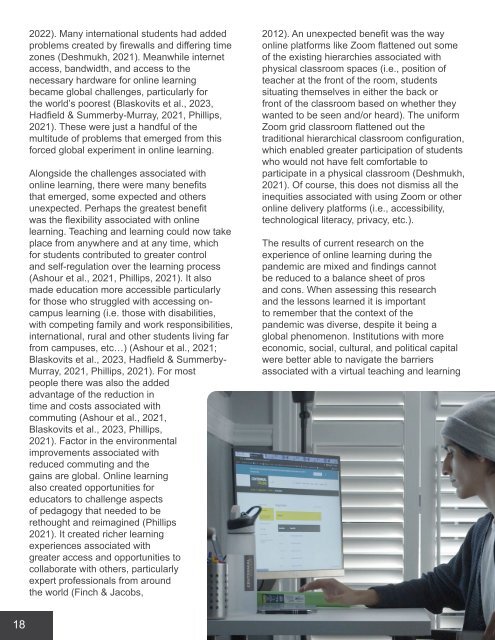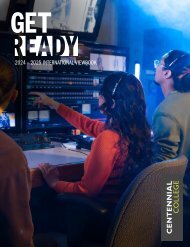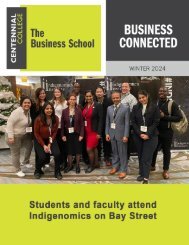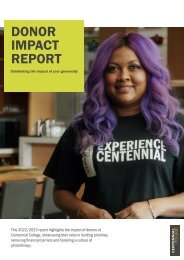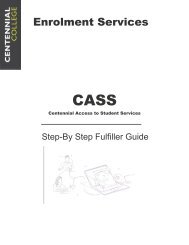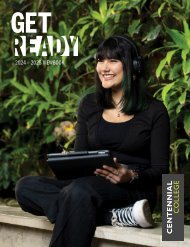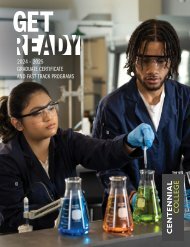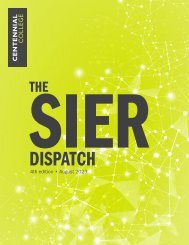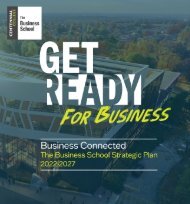The Teaching and Learning Innovation Digest - May 2023
Welcome to a truly special edition of the Teaching and Learning Innovation Digest! Our seventh annual academic publication has assumed an incredibly meaningful shape and form for a number of reasons. Not only did we receive an enthusiastic response with over 30 submissions via our institutional broadcast, but we also have consciously and intentionally embraced the principles of Universal Design for Learning by attempting to represent and celebrate the varied forms of expressions therein. From reflective essays, poetry, visual and performing arts, podcasts, video conversations to scholarly work, academic and applied research, news and updates, and interviews, this is truly a power-packed publication!
Welcome to a truly special edition of the Teaching and Learning Innovation Digest! Our seventh annual academic publication has assumed an incredibly meaningful shape and form for a number of reasons. Not only did we receive an enthusiastic response with over 30 submissions via our institutional broadcast, but we also have consciously and intentionally embraced the principles of Universal Design for Learning by attempting to represent and celebrate the varied forms of expressions therein. From reflective essays, poetry, visual and performing arts, podcasts, video conversations to scholarly work, academic and applied research, news and updates, and interviews, this is truly a power-packed publication!
Create successful ePaper yourself
Turn your PDF publications into a flip-book with our unique Google optimized e-Paper software.
2022). Many international students had added<br />
problems created by firewalls <strong>and</strong> differing time<br />
zones (Deshmukh, 2021). Meanwhile internet<br />
access, b<strong>and</strong>width, <strong>and</strong> access to the<br />
necessary hardware for online learning<br />
became global challenges, particularly for<br />
the world’s poorest (Blaskovits et al., <strong>2023</strong>,<br />
Hadfield & Summerby-Murray, 2021, Phillips,<br />
2021). <strong>The</strong>se were just a h<strong>and</strong>ful of the<br />
multitude of problems that emerged from this<br />
forced global experiment in online learning.<br />
Alongside the challenges associated with<br />
online learning, there were many benefits<br />
that emerged, some expected <strong>and</strong> others<br />
unexpected. Perhaps the greatest benefit<br />
was the flexibility associated with online<br />
learning. <strong>Teaching</strong> <strong>and</strong> learning could now take<br />
place from anywhere <strong>and</strong> at any time, which<br />
for students contributed to greater control<br />
<strong>and</strong> self-regulation over the learning process<br />
(Ashour et al., 2021, Phillips, 2021). It also<br />
made education more accessible particularly<br />
for those who struggled with accessing oncampus<br />
learning (i.e. those with disabilities,<br />
with competing family <strong>and</strong> work responsibilities,<br />
international, rural <strong>and</strong> other students living far<br />
from campuses, etc…) (Ashour et al., 2021;<br />
Blaskovits et al., <strong>2023</strong>, Hadfield & Summerby-<br />
Murray, 2021, Phillips, 2021). For most<br />
people there was also the added<br />
advantage of the reduction in<br />
time <strong>and</strong> costs associated with<br />
commuting (Ashour et al., 2021,<br />
Blaskovits et al., <strong>2023</strong>, Phillips,<br />
2021). Factor in the environmental<br />
improvements associated with<br />
reduced commuting <strong>and</strong> the<br />
gains are global. Online learning<br />
also created opportunities for<br />
educators to challenge aspects<br />
of pedagogy that needed to be<br />
rethought <strong>and</strong> reimagined (Phillips<br />
2021). It created richer learning<br />
experiences associated with<br />
greater access <strong>and</strong> opportunities to<br />
collaborate with others, particularly<br />
expert professionals from around<br />
the world (Finch & Jacobs,<br />
2012). An unexpected benefit was the way<br />
online platforms like Zoom flattened out some<br />
of the existing hierarchies associated with<br />
physical classroom spaces (i.e., position of<br />
teacher at the front of the room, students<br />
situating themselves in either the back or<br />
front of the classroom based on whether they<br />
wanted to be seen <strong>and</strong>/or heard). <strong>The</strong> uniform<br />
Zoom grid classroom flattened out the<br />
traditional hierarchical classroom configuration,<br />
which enabled greater participation of students<br />
who would not have felt comfortable to<br />
participate in a physical classroom (Deshmukh,<br />
2021). Of course, this does not dismiss all the<br />
inequities associated with using Zoom or other<br />
online delivery platforms (i.e., accessibility,<br />
technological literacy, privacy, etc.).<br />
<strong>The</strong> results of current research on the<br />
experience of online learning during the<br />
p<strong>and</strong>emic are mixed <strong>and</strong> findings cannot<br />
be reduced to a balance sheet of pros<br />
<strong>and</strong> cons. When assessing this research<br />
<strong>and</strong> the lessons learned it is important<br />
to remember that the context of the<br />
p<strong>and</strong>emic was diverse, despite it being a<br />
global phenomenon. Institutions with more<br />
economic, social, cultural, <strong>and</strong> political capital<br />
were better able to navigate the barriers<br />
associated with a virtual teaching <strong>and</strong> learning<br />
environment. <strong>The</strong>y had better infrastructure,<br />
resources, <strong>and</strong> support for technology (Stack,<br />
2021). <strong>The</strong>re were also robust student<br />
services like mental health, <strong>and</strong> financial aid<br />
that students could access. Meanwhile, the<br />
diversity of learners meant there was<br />
not a common experience even among<br />
learners. For example, online learning created<br />
opportunities for those in rural locations to<br />
access education, but this was not the case<br />
for many Indigenous learners in rural areas<br />
who had limited access to internet, computers/<br />
laptops, <strong>and</strong> other technology <strong>and</strong> support<br />
(Blaskovits et al., <strong>2023</strong>).<br />
As we emerge from the p<strong>and</strong>emic the<br />
speed <strong>and</strong> scale of change of technology<br />
has not slowed despite the concerns<br />
exposed by the p<strong>and</strong>emic. <strong>The</strong> strides<br />
made in technology are here to stay <strong>and</strong><br />
will probably accelerate. Many want the<br />
benefits offered by technology to continue,<br />
but also want options for what technology<br />
could not provide. <strong>The</strong>re also needs to be<br />
a consideration of the disparities between<br />
different groups <strong>and</strong> how technology<br />
can both lessen <strong>and</strong> widen<br />
those disparities. For example,<br />
technology has increased access<br />
to education for learners from<br />
rural communities <strong>and</strong> other<br />
marginalized groups (i.e. those with<br />
chronic health conditions) but at<br />
the same time growing poverty<br />
particularly among students from<br />
historically marginalized groups has<br />
raised concerns about expenses<br />
associated with technology <strong>and</strong> good<br />
internet connections (Blaskovits,<br />
<strong>2023</strong>). <strong>The</strong>re is talk of postsecondary<br />
institutions becoming more “nimble”<br />
in the future, given that their world<br />
will likely experience more global<br />
crises due to further p<strong>and</strong>emics<br />
<strong>and</strong> the impacts of climate change<br />
(Deshmukh, 2021). As higher<br />
education gravitates more towards<br />
online learning this inevitably<br />
raises questions about the role of<br />
the campus.<br />
Role of the campus: Questioning space<br />
<strong>The</strong>re is a lot of discussion about the role of<br />
physical campus as postsecondary institutions<br />
seek to find the right balance between face-toface<br />
<strong>and</strong> virtual learning. In fact, in his research<br />
on the post p<strong>and</strong>emic university campus,<br />
Jay Deshmukh (2021) asks: “Has COVID-19<br />
killed the campus? He <strong>and</strong> other researchers<br />
suggest that it has not. In fact, educational<br />
scholars recognize that learning is not just<br />
formal, cognitive, <strong>and</strong> limited to classroom<br />
spaces. Rather, he notes that “learning takes<br />
place in the multiplicity of formal <strong>and</strong> informal<br />
interactions that occur frequently <strong>and</strong> naturally<br />
across the campus”. <strong>The</strong>se interactions<br />
contribute to the cognitive <strong>and</strong> social<br />
development of those who inhabit these<br />
institutional sites. If anything the p<strong>and</strong>emic<br />
taught us that there is inherent value in real<br />
<strong>and</strong> meaningful interpersonal engagement (i.e.,<br />
collegiality <strong>and</strong> well-being) that takes place on<br />
campuses (Blaskovits, <strong>2023</strong>; Deshmukh, 2021,<br />
Phillips, 2021).`<br />
18<br />
19


